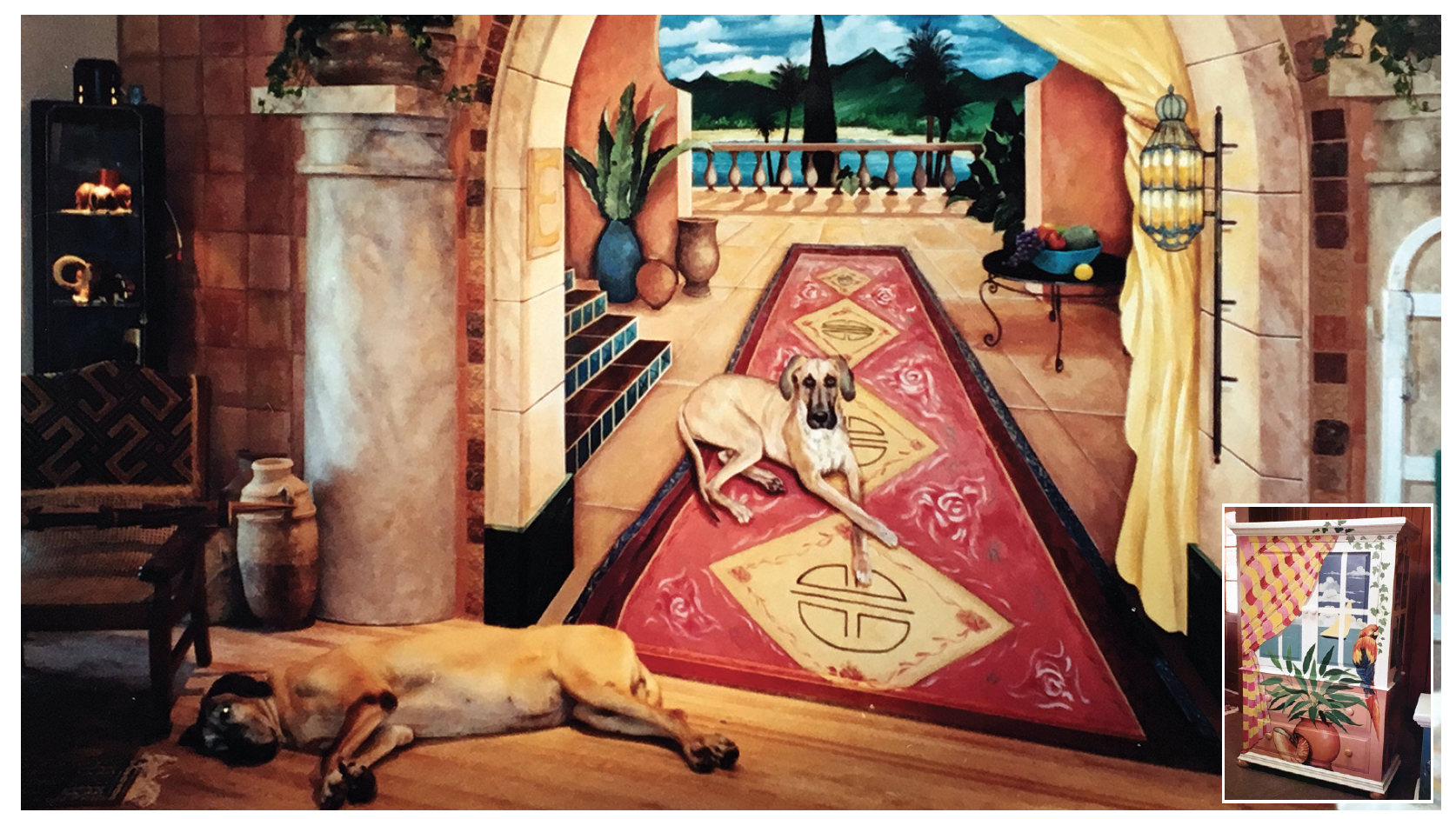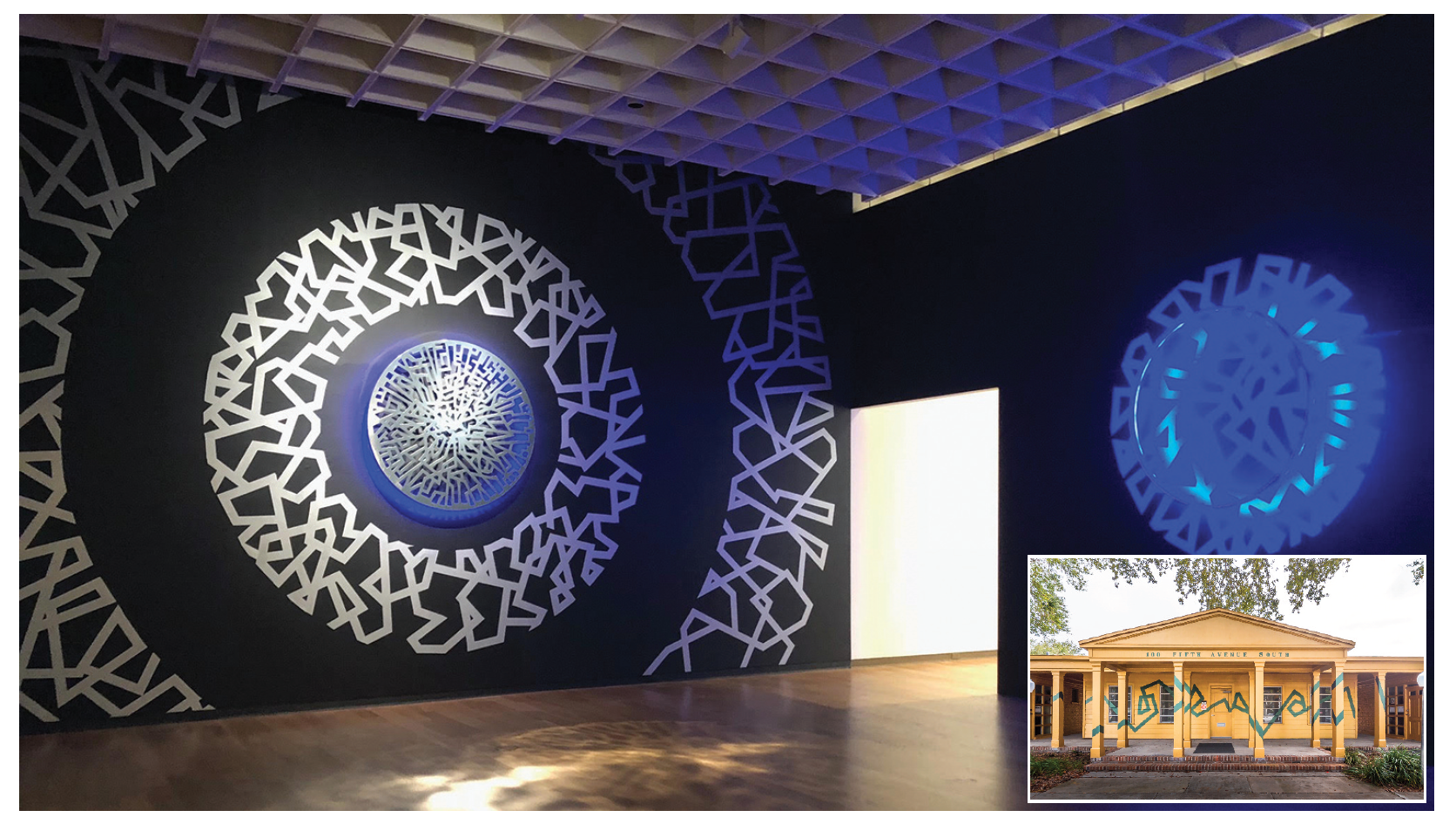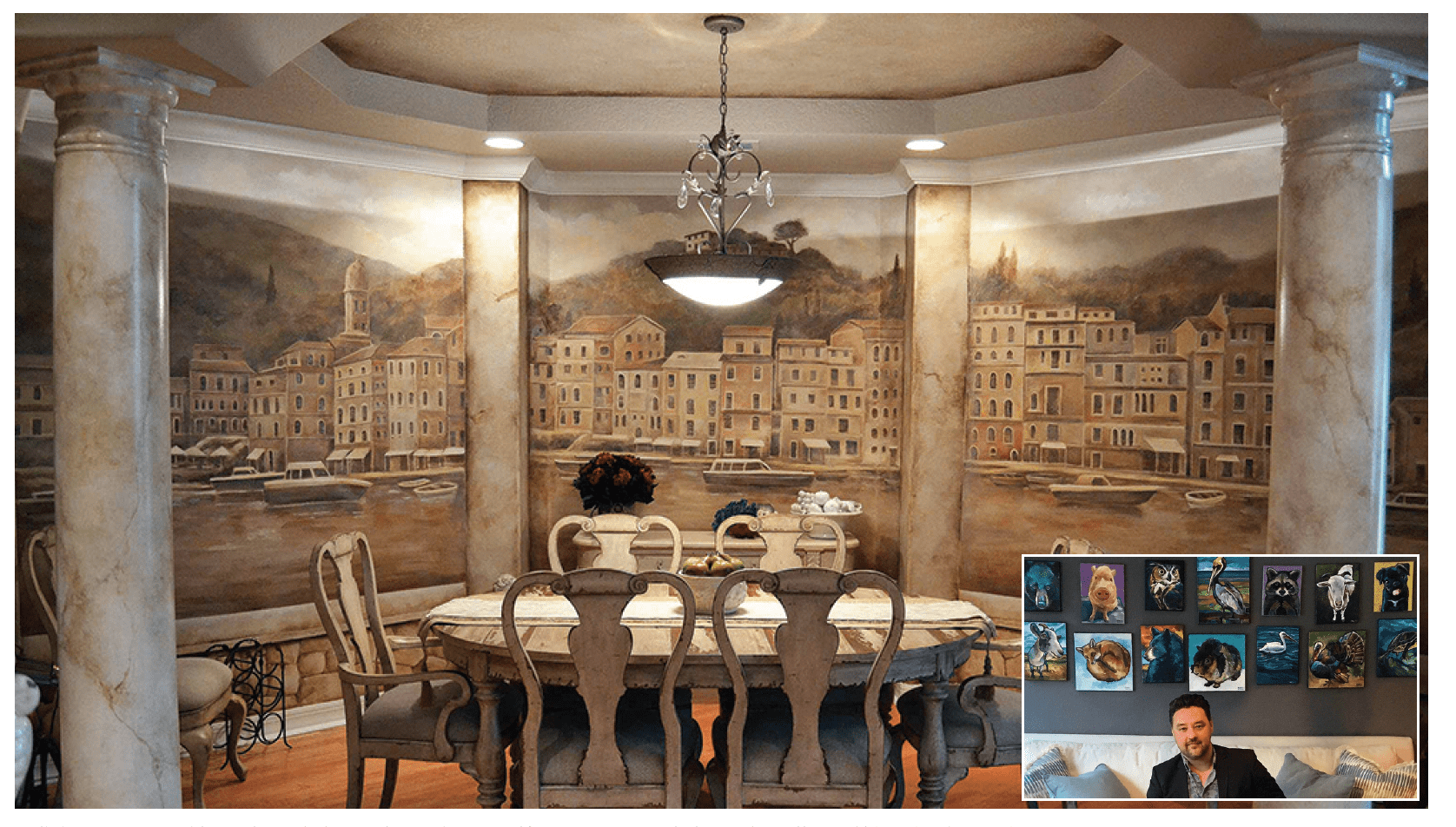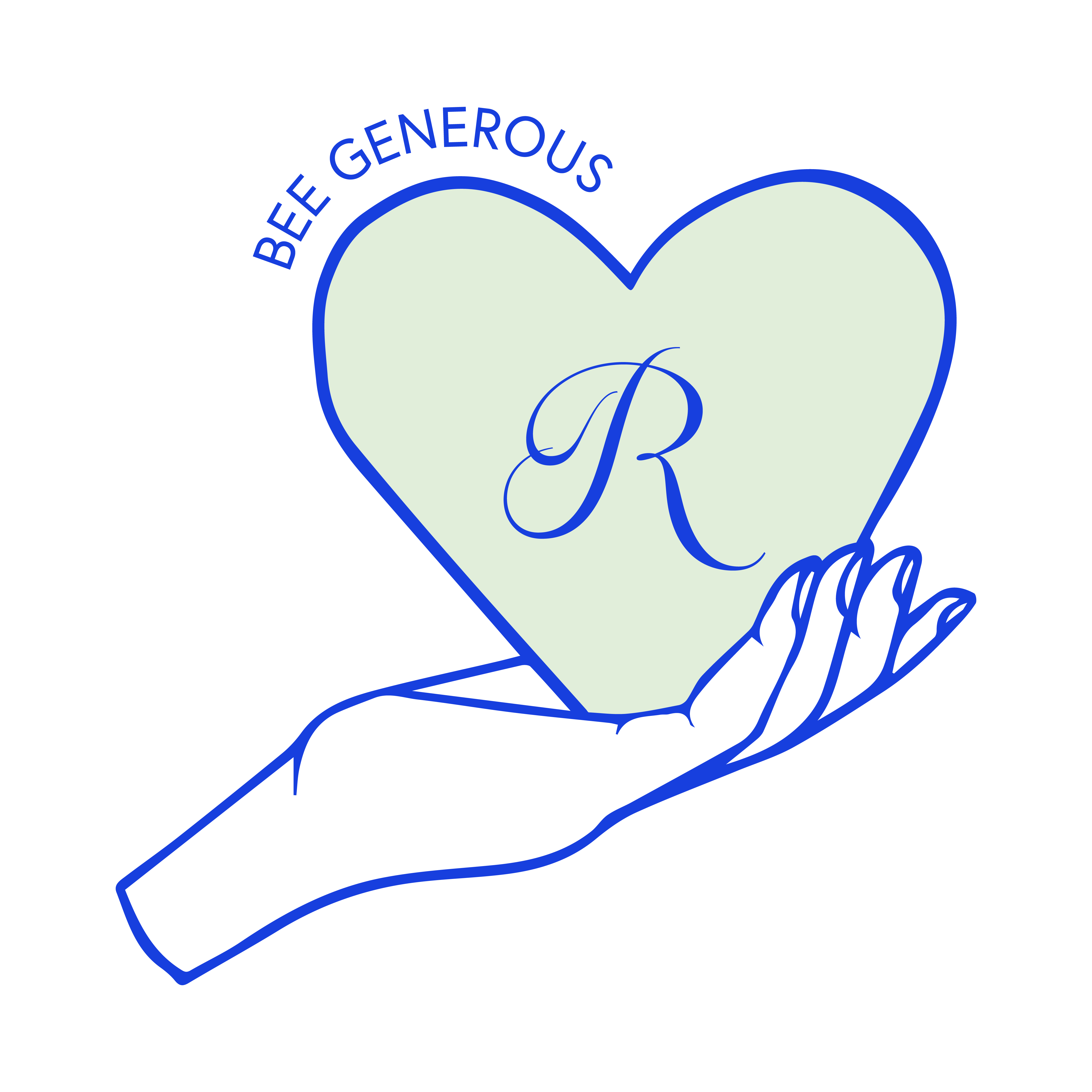Local muralists talk about bringing their art form indoors
Murals — those eye-catching splashes of color and invention — are now officially a Tampa Bay Thing. SHINE, the St. Petersburg Mural Festival (next installment Oct. 6-14), has played a big part in showcasing the wealth of talented muralists in the area alongside artists from all over the world, and murals of all sorts grace the exteriors of buildings from Dunedin to Seminole Heights.
But murals aren’t just an outdoor phenomenon. They also play a distinctive design role inside many private homes and offices, too. We spoke to three local artists about the special demands and delights of using walls as their canvas: Robert Phelps, Diane Tonelli, and Ya La’ford.
[Conversations have been edited and condensed for print publication. See the complete interviews online at dupontregistrytampabay.com.]
ROBERT PHELPS
As both a professional exhibited artist and decorative painter, Robert Phelps is recognized for his vibrant figurative work and uniquely colored portraiture. Raised in the mountainous terrain of Appalachia, he developed a deep affinity for the wilderness “within and without” humankind, his subjects ranging from Mike Tyson to teacup chihuahuas. [Bio adapted from robertphelpsart.com]
dR: How did you get started creating murals?
I began painting murals in high school for extra credit. From there I branched out to creating murals for local businesses in Lake County. One of them, in Mt. Dora, has since been painted over, but it was a bit notorious at the
time. When I was 18, the owner of a restaurant gave me a free license to create whatever I wanted on the exterior walls, so I made a massive surrealist mural featuring all sorts of strangeness.
dR: What is the process for developing the murals? What inspires you?
When I am approached for a mural project, I listen carefully to the ideas expressed by the client. Most often, my clients have a general direction they’d like to go but leave the creativity up to me, which I find very complimentary. As far as inspiration goes, there is a quote by author Anais Nin that I always refer back to. She said: “We don’t see things as they are, we see them as we are.” Generally, I see things as an artist, as a painter. I find inspiration everywhere. That part of my mind is always on.
dR: Do you feel murals are appearing more in homes as permanent works of art?
Murals in homes have always been popular… it’s a tradition dating back to the ancient cave-dwellers. While there are digital alternatives available, most people prefer the hand-painted artistry of a skilled muralist. My specialty as a mural artist has been in creating unique vistas or environments in homes and businesses. Usually, these are places that are personally very significant to the client: a beach they love, a romantic spot in Italy, a family locale, etc.
dR: What has changed in the past 3 to 5 years for muralists?
In St. Petersburg we see a blossoming of public mural popularity; I’m not sure how much the residential mural market has changed. One significant upgrade has been the increased connectivity with potential clients via the internet. New websites are making things faster and more direct for both artists and clients. It’s a quantum leap from the days when I began.
DIANE TONELLI
A Florida-based artist whose murals grace private residences and public buildings throughout Central Florida, Tonelli is noted for her depictions of sea life and Italian scenery, and for whimsical murals that appeal to children. She also produces commissioned portrait art and has painted on every kind of furniture imaginable, turning armoires into “bunny hutches” and dressers into “jungles.” [Bio adapted from dianetonelli.com]

dR: How did you get started creating murals?
I became interested in painting murals when my 4th grade teacher, who was very artistic herself, rolled out large strips of paper on the walls of the classroom. We worked in groups of four, an hour at a time. Our first mural began to take shape — large colorful flowers, electric blue sky and a stream of turquoise water in the foreground. A couple of us could draw pretty well, so we were the ones to create a sort of paint-by-number thing for the other kids! For me, it was a powerful feeling to be in that position. I was unsure of myself, and art had given me an opportunity to shine.
dR: What is the process for developing the murals? What inspires you?
I draw inspiration from nature. I do lots of research on wildlife, plants and sea life. Many times my clients suggest a theme for a mural, then I provide a quick sketch. We discuss colors and intensity of colors. I start with a background painting, applying the most distant part of the mural, then I work forward with the nearest elements in the foreground. Adding animals and people into a scene lends activity and vibrancy. Many clients like to add their pets or want for me to hide names of children onto a leaf or a vine, a personal touch!
dR: What has changed in the past 3 to 5 years for muralists?
Currently, I have found that my clients are more aware of the interest factor a mural adds to a room. Brighter colors seem to be a trend.
dR: Do you ever worry about what happens to the mural after completion?
I tell my clients that I can always come back and brighten and/or repair the mural. I can add anything… i.e.names of children and pets. Anything can be incorporated into a finished mural. I like to put a coat of acrylic Urethane on the final product.
YA LA’FORD
Maintaining her studio work in both Tampa Bay and New York, Ya La’Ford is a professor, visual painter, installation artist and muralist, with a MFA from The Art Institute of Boston and a Juris Doctor law degree from the University of Florida for good measure. Her work can be seen across the country from the Boston Public
Library to the Dr. Carter G. Woodson African American Museum. [Bio adapted from shineonstpete.com]

dR: How did you get started creating murals?
As a youngster, my artistic journey began [with] my first pack of crayons. While they were undoubtedly intended for paper and coloring books, I for some unknown reason favored the clean white surfaces of my parents’ walls. I suppose it was destiny that led me to paint murals as a career eventually. During a secluded art residency my canvas and materials got lost in delivery, and I had several weeks to present a new body of work. On a leap of faith, I transferred my canvas-intended patterns to the studio wall. These moments were defining for me and gave me the confidence to explore the dynamics of painting large-scale murals transforming places and spaces.
dR: Do you feel murals are appearing more in homes as permanent works?
Absolutely! Murals have spearheaded public engagement and a greater appreciation for the ever-evolving natural world around us. As a result of this momentum, we’re finding a diverse group of homeowners seeking to bring a sense of artistic exploration into their living environment. In my private mural practice, I’ve worked with parents to design murals for their kids’ spaces, as often the dynamics of color can be used to rouse students’ self-expression
and problem-solving skill sets, as art and life skills go hand-in-hand.
dR: What is the most unique location of a mural you created?
Given I am an art professor, I would suggest the mural I completed with the University of South Florida (St. Petersburg). The concept was to encase the exterior of a mid-century building across from the Dali Museum and Albert Whitted Airport. The design involved wrapping the entire surface with 14 layers of metallic gold contrasted [with an] overlay of green interconnecting lines, focused on representing the connectivity between student life and the surrounding downtown ecosystem.
dR: What advice would you give to a potential client when deciding on a mural?
I think it’s essential for clients to discuss their aesthetic goals early in the design phase. Often, people believe that artists are sensitive about their work, and much of that is true; however, discussing and vetting ideas early can assist both parties in achieving common creative ground. For corporate clients, I always advise them to give strong consideration to including a mural that will reflect the brand ethos and attitude of the company. In many cases, it can be the first impression for clients visiting their establishment.
dR: What should you discuss with a client about the mural before starting?
I always listen to a client’s story and ask them to identify specific memories or life passages that could translate into a color aesthetic. The murals I create using geometric labyrinths speak to experiences both seen and unseen, yet aim to offer clients the ability to contribute design viewpoints. Ultimately, it’s essential to maintain excellent communication [throughout] the process, as often the initial stages of installing a mural can be perplexing until the full picture comes together.




